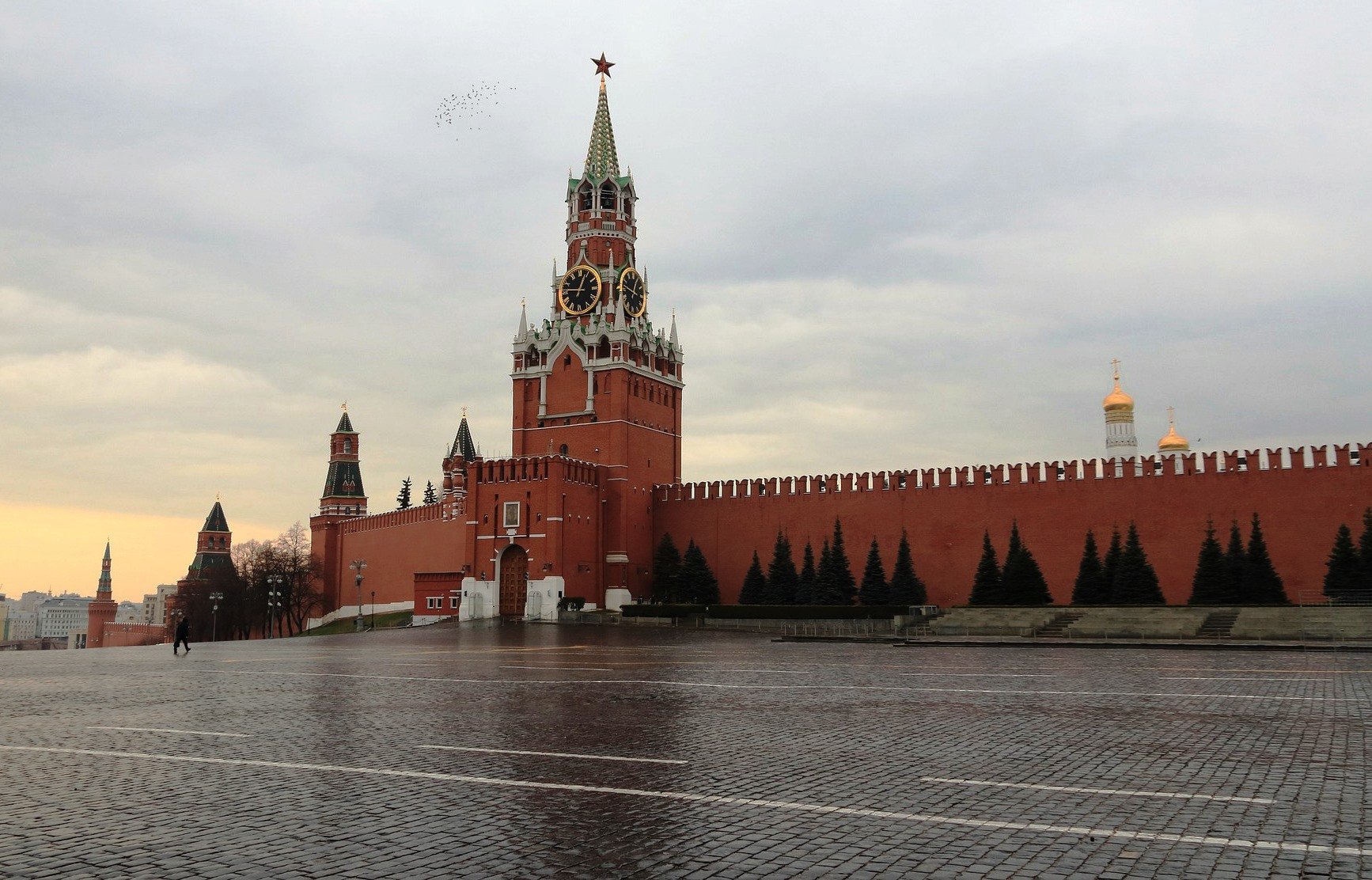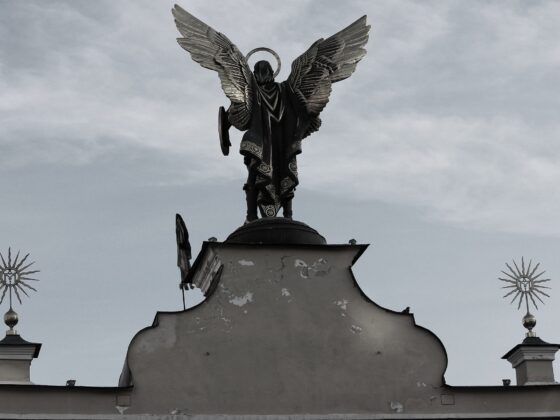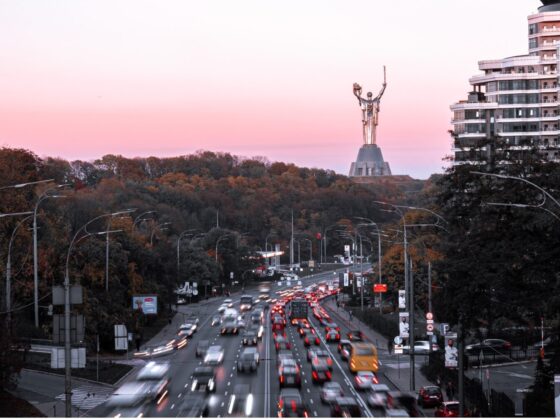(PONARS Eurasia Policy Memo) President Vladimir Putin’s full-scale war against Ukraine, which began in the early hours of February 24, has become a turning point in the world order. The European security architecture has cracked, and post-Cold War diplomacy has failed. Humankind has entered an extremely volatile period with an increased risk of new regional conflicts and a global nuclear Armageddon. These dangerous events have also opened a new chapter in the outgoing drama of post-Soviet transitions. This war now, in the center of Europe, has become a shock to most countries, and sadly Moscow has not lost its ability to fully surprise. Ironically, until recently, Russia was not on the list of top threats to Western concerns, which had been dominated by a growing United States-China rivalry.
For almost a year prior to the full-scale war itself, however, a sharp spike in Moscow’s international activities took place, mostly a double-edged mix of extensive military maneuvers and troop buildups along the Ukrainian border, combined with tough language demanding the return to a 1997 “status quo” in Europe and the drawing of new red lines with long-term legal guarantees. Putin has laconically defined this strategy toward the West as a way of building tensions and keeping them in such a state for as long as possible. There are several factors behind this breakthrough in Putin’s international activities, among them: recent trends in domestic politics, confidence in national macroeconomic stability, a personally biased approach toward international affairs, and a very specific set of views on Russia’s development and its role in the world, which some researchers have called a Putin doctrine that incorporates resentment and imperial nostalgia. Overall, it has not been a coincidence of random events but a “natural” transformation of Russian foreign policy, determined by the internal logic of an authoritarian regime. The resulting Ukrainian crisis has suddenly accelerated dramatic changes in European security expectations, which will have far-reaching political and economic consequences for Russia as well.
Domestic Variables
All major shifts in the Kremlin’s foreign policy in the past 20 years have been synchronized with domestic variables, primarily the emergence and development of Putin’s power vertical. The current stage of Russia’s foreign policy is no exception – it has seen a further transition of an existing system that has evolved into more autocratic forms of governmental regulation that emerged in 2020 and 2021. As a result of constitutional reforms, the country’s political system has become even more centralized through the further strengthening of presidential powers concentrated around one person.
In practical terms, coercive pressure has been significantly increased on society in general, and particularly on “non-systemic” opposition that has been almost completely deflated and removed from the legal field through the criminalization of its activities. New rules extending the voting process by several days and introducing a new online voting system totally controlled by the authorities have guaranteed “desirable” results regardless of the real attitudes and preferences of the population. During the State Duma elections in the fall of 2021, “systemic opposition” activity was severely restricted, and serious political debates were practically withdrawn from the electorate process and replaced by artificial and false choices. Many independent media outlets and journalists were labeled “foreign agents.” Despite these efforts, Putin’s electorate has continued to shrink, and the effectiveness of official channels of propaganda has declined.
The initial COVID-19 economic outbreak in Russia, which crashed energy prices and decreased annual GDP by 3 percent in 2020, has been relatively short. The OPEC+ agreement, where Moscow played a significant role, reduced a record crude production from the market in 2020 and 2021, and added to an oil price recovery and to a 4.3 percent GDP growth to Russia’s economy last year. Economic data show that Russia is currently “swimming in money,” and its exports are growing at a 58.5 percent annual rate, bringing in $1.2 billion daily. The country’s current account surplus has been exceptionally strong, permitting authorities to raise gold and foreign exchange reserves to a record $639.6 billion.
Yet it has been a short macroeconomic respite. Under the pretext of growing foreign threats, the government has continued to militarize, and under the pressure of geopolitical factors, even prior to the war, the Russian market wiped out $230 billion in capitalization, and the ruble lost about a third of its value. As it begins to experience the consequences of new Western sanctions, it is clear enough that Russia will be gradually going into recession despite high oil prices. The situation will also worsen because Moscow has clearly failed to address the country’s coronavirus pandemic challenges, which prompted the largest peacetime population decline in its history—registering more than 1 million excess deaths since the start of 2020.
Overall, however, the authoritarian “stabilization” of the country’s domestic political posture and its strong macroeconomic performance have opened a narrow window of opportunity for Putin’s foreign policy hawkishness. The Kremlin is in a hurry since the next phase of Russia’s domestic political cycle—the presidential election of 2024—is just around the corner. The goal is to reach significant foreign policy “achievements” that could help contain Putin’s declining popularity. In the absence of successes in the fight against a deteriorating social environment, foreign political adventures may be tempting—in the past, the ratings of top officials were strengthened by conflicts with the West over Kosovo and Iraq, the “peace enforcement” in Georgia, and the annexation of Crimea. This is one of the present reasons for Putin’s apparent impatience and rush. The other motivation, most likely, is related to Moscow’s evaluation of the political and economic situation in the West.
International Context
Recent Western publications have once again raised a perplexing question about how a country with an economy of less than 2 percent of global GDP and military defense spending 11 times less than the U.S. defense budget can threaten the West with military-technical measuresand even open military confrontation.
Since Putin’s speech on security policy at the Munich Conference in 2007, Moscow never tires of strongly criticizing the global liberal order and the hazards of a unipolar world. The global financial crisis of 2008-2009 led the Kremlin to believe in the weaknesses and vulnerabilities of Western economic models and a Western version of globalization. The further events of Brexit in Europe, and the election of Donald Trump in the United States, became arguments that favored an idea that the West continues to decline, generating internal instability in leading countries and growing contradictions between them. These included the belief that limited U.S. resources pushed Washington to withdraw troops from Afghanistan and led to its decreased engagements in Europe and the Middle East, seeking to concentrate efforts as much as possible on America’s rivalry with China and on itsemergent domestic agenda.
This has also prompted the Kremlin to assume that a Biden administration would not be interested in escalating confrontations with Moscow or even less in the idea of greater rapprochement between Russia and China. President Joe Biden is viewed in Moscow as a politician with Cold War experience who understands better than others the need to maintain a balance of power strategy and, under such conditions, wouldn’t avoid respecting Russian “red lines.” Biden and Putin’s one-on-one meeting in Geneva in June 2021 and their virtual summit in December 2021 seemed to confirm the effectiveness of such an approach, where Putin, having gained the status of a “worthy adversary,” has managed to sit Biden down at the negotiating table by increasing military and political pressure around Ukraine.
In considering the existing international dynamic, Moscow has also taken into account Europe’s weak spots, such as the changing political leadership in Germany and the upcoming presidential elections in France in April 2022 (which make it unclear who will set the tone for Europe in the post-Merkel era), the more cautious approach of European capitals toward China’s containment, and the lack of unity among them regarding sanctions against Russia or dealings with the Nord Stream 2 pipeline. In addition, Europe has become fearful of Russia’s expanding military footing near the Ukraine border and its manipulative energy diplomacy that adds to the instability of regional energy markets, following unprecedented natural gas price spikes and energy supply shortages in the fall of 2021.
Above all, the relationship with Kyiv has become a growing irritant for Moscow, as Ukraine has continued its transition from a country that “was not Russia” (which was the title of Ukrainian President Leonid Kuchma’s book in the early 2000s) to an “anti-Russia” (as Putin describes it). Moscow’s initial expectation that it would be possible to reach a deal with President Volodymyr Zelensky did not materialize. The Kremlin also realized that the Ukrainian army could be modernized, having substantially increased its lethal weapon arsenals through channels of bilateral cooperation without formal accession to NATO. The use of Turkish combat drones in the armed conflict zone of eastern Ukraine has confirmed these concerns. This means that for the mid-term period, the military balance between Russia and Ukraine could change and complicate military pressures on Kyiv, particularly from the territory of the unrecognized separatist entities in the Donbas and Luhansk regions.
Finally, in a broader sense, Russia’s leadership believes that Moscow has a military-technological advantage that could soon vanish. What looks possible now might well be impossible in the near future. Current Russian tactics have appeared as a result of extensive collective planning, which does not mean that those involved in elaborating the plans have been privy to all the details.
From High-Stake Diplomacy to War
The new shift in Russia’s relations with the West was publicly announced by Putin for the first time during his speech to an expanded Foreign Ministry board on November 18, 2021. It took less than one month for Russia’s MFA to submit two draft treaties with the United States and NATO outlining security arrangements. That was done with uncharacteristic speed, as it usually takes several months if not years to coordinate interdepartmental approvals for texts of international agreements. These drafts switched the register of Russia’s interaction with the West to a new, extremely conflictive level. Moscow’s proposals (de facto ultimatums), as several sets of extensive consultations in January 2022 have shown, contain a mix of unilateral provisions that are not acceptable to the West (such as slamming NATO’s open-door policy and turning back the clock to 1997) along with some pragmatic articles that address mutual concerns and could be discussed as security risk mitigation measures.
However, diplomatic efforts, including shuttle diplomacy by President Macron and Chancellor Olaf Scholz, did not bring any results: Moscow’s military muscle-flexing policy continued, while the West replied withthreats of heavy sanctions and an increase of lethal weapon shipments and military training in Ukraine. In the meantime, Putin had concentrated Russia’s military forces for a major offensive. The Kremlin’s goal was not to negotiate but to “pump up resentment” as a cover operation for upcoming military action.
An evident flaw of Moscow’s diplomacy is that Russian envoys are not aware of Putin’s strategic plans, and the negotiators can only guess what they might be. The MFA seems to be mostly playing a technical role—implementing decisions already made by the Kremlin that create inconsistencies in the words and deeds of Russian diplomats. On the one hand, uncertainty and unpredictability are core pieces of Putin’s strategy. On the other hand, they are a symptom of the growing de-institutionalization and fragmentation of Russia’s activities abroad. The reasons are many: under a strictly vertical power structure, there is a lack of horizontal coordination, a hidden presence of competing interests among Russian elites, including security agencies, and significant influence-peddling on the part of lobbyists.
Russian military escalation had three stages—in the spring of 2021, in the autumn of that year, and in February of 2022, when a transition to open warfare occurred after the two separatist enclaves in eastern Ukraine were recognized as independent. Such rapid evolutions indicated that a military scenario designed to inflict maximum damage on Ukraine’s armed forces, followed by a regime change, had been carefully prepared. Putin has justified the war by calling for “de-Nazification” and “demilitarization” of Ukraine and has portrayed this military invasion as a preemptive strike against Western aggression. The West, in turn, has imposed new harsh sanctions that include Russia’s central bank, after accusing Moscow of violating international law and infringing on the sovereignty of a neighboring country. In the process, informational warfare against Russia through interpretation of ongoing events and by highlighting war atrocities in Ukraine has continued. Despite the present military conflict, a diplomatic track with Russia might still emerge since even mediocre diplomacy is better than hardcore war.
Outlines of a new European security architecture have also gained impetus in the opposite direction to Putin’s efforts toward recreating Russia’s spheres of influence by dividing NATO and weakening trans-Atlantic solidarity. Many Western experts and policymakers believe that Moscow, after a major arms test in Ukraine, will try to further redraw the map of Europe. They are concerned that Russia could be the frontrunner of a group of well-armed rogue states seeking to subvert the international order, attack neighboring states, annex conquered territories, as well as support insurgent separatist forces and authoritarian rulers around the world. As part of this international agenda, Kremlin is asserting unilateral military-technical measures that could actually mean the deployment of new offensive weapon systems in such sensitive regions as Kaliningrad, Belarus, or Crimea, and strengthening military cooperation with China. Moscow has also tried to resurrect tensions over the replication of the Cuban missile crisis, tossing around the idea of manufacturing vertical and horizontal escalations.
Conclusion
The main features of Russia’s foreign policy that accelerated a year ago—increasing hostility towards the “Historical West” that has finally been transitioned into a full-scale war against Ukraine along with diplomacy from a position of strength—have already demonstrated their limits and the high costs the country may have to pay. No less important than the present conflict with Ukraine, there has been a significant revision of Russia’s relations with “near abroad” countries, starting with: Moscow’s involvement in halting the Karabakh conflict; its assistance to Lukashenko’s dictatorship, which was on the verge of collapse; and recently the rotation in and out of Russian troops into Kazakhstan under the umbrella of the Collective Security Treaty Organization (CSTO), which in essence has erased lines between external and internal circumstances as to when the CSTO (mostly Russian) military forces can be used in the territory of the former Soviet Union. Overall, the strengthening of the military power component in Kremlin policy has become a marker of the increasing involvement in the decision-making process of Russia’s security agencies.
At the end of the day, such policies are pushing Russia toward geopolitical isolation, which cannot be offset by strategic partnership announcements with China and India. Currently, Moscow’s activities haven’t become a genuine item on the agenda of those two countries, while Beijing and Delhi are also trying to minimize the impact of that cooperation with Russia in a way that could affect their relationships with the West. However, those new measures of geopolitical pressure, threats, and uncertainty against the West and Russia’s neighboring countries, which have been recently tested, have turned out to be an important part of the Kremlin’s formidable toolkit. Since they have become available, they will certainly continue to be used in the foreseeable future.
Vadim Grishin is a Professorial Lecturer at George Washington University.
PONARS Eurasia Policy Memo No. 743
Image credit











